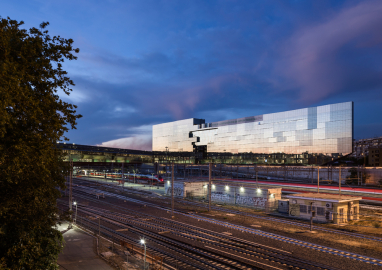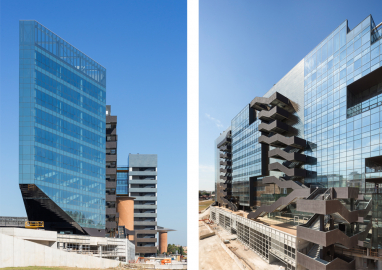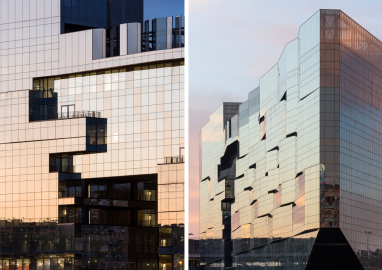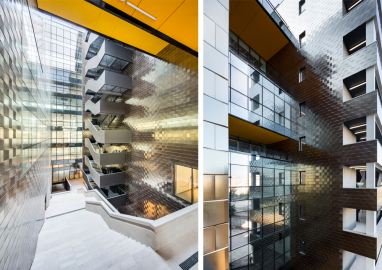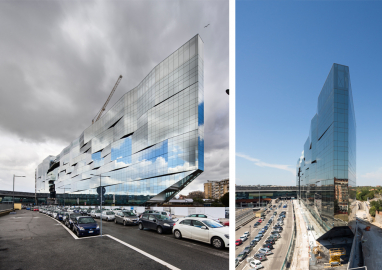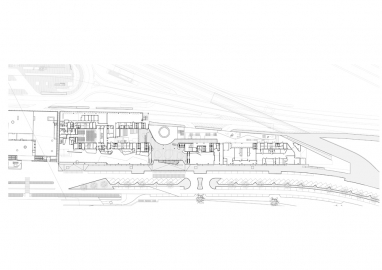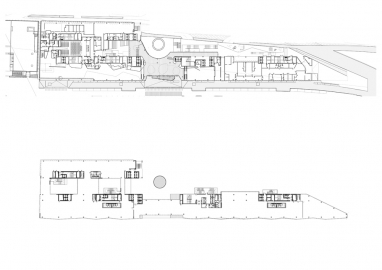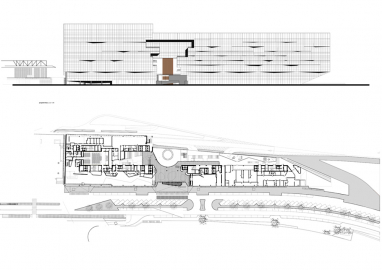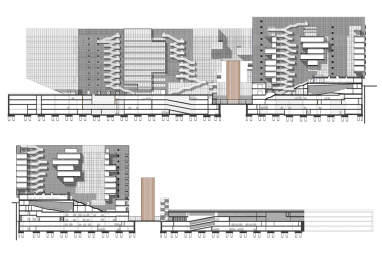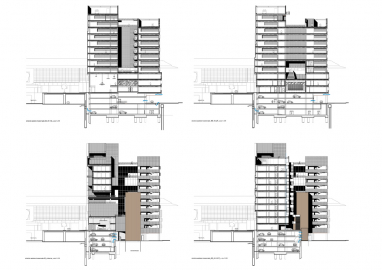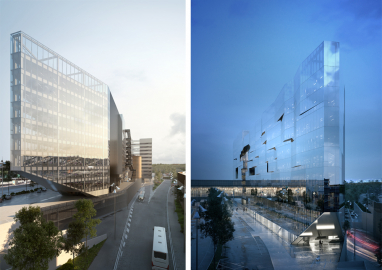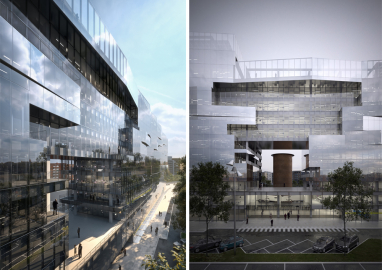New BNL-BNP Paribas Real Estate Group headquarter
The design of the new headquarters of BNL is part of a particular and unique context, because is a layering of infrastructures that are separated by two important urban areas of the city of Rome, thanks to the construction of the station for high-speed rail, which leads to a new role, not only in terms of services service but also as “urban place”.
We consider it important that the new building develops a dialogue with the adjacent complex of Tiburtina railway station, with its main features characterized by size and horizontality. The dialogue does not necessarily have to be direct, but should have references both to perspectives and to the different levels of the station, and also a different role (the horizontal stratification) in the new urban landscape.
Our goal is to meet the functional needs with a building that is capable, in its autonomy and identity, to belong to the urban context of the Tiburtina Station and at the same time to be representative both for the city of Rome and for its users.
From these considerations, a proposal is made for a building that is able to relate differently to the north-west with the district Pietralata and south-east with the Tiburtina Station complex. Dynamic, reflective and fading, where its perception is mainly dynamic and different meter after meter (from the train, from the station, from the different areas of the city), almost as if it was moving, comparatively, where the contect is urban or “slow”, facing North, the perception is static transparent and material.
The building thus assumes different roles leading our imagination to important works of contemporary artists and filmmakers who have treated the themes of perception and "reflection" of reality
The proposed typological choice wants to be identified as a perceptual device of the context and of the reality, capable of establishing a symbolic value where directs its gaze, a gaze directed at the same time on two different landscapes: a dynamic one, of the rail station and on the horizon of Rome, and one of the urban district of Pietralata. The perception ratio is subsequently a relation that the project moves from outside to inside, creating a succession of spaces now dilated and now compressed, which gradually accompany us building a backbone both vertically and horizontally around all “productives” areas, as well as the directional and officies areas, and able from time to time to help us to discover new "perspectives" and a new "context".
The building comes formally to assume a symbolic value that is found in the following characteristics that define his own "body":
• the floor pan, linear on the east and gently warped to west through the writing of a variable sequence of broken lines;
• the choice of not wanting to create a "front and back" but compositive music sheet capable of creating amazement and wonder in the "metamorphosis" of the building, which will be always perceived differently because of its ability to react to the sun light at different hours of day during different days of the year;
• the articulation of its functions, composed according to the principle of horizontal stratification, in a classic sequence as base ("collective" or better, interface with the public functions ), elevation (the predominant functions / offices), the crowning (the unexpected and unique space and its relationship with the sky);
• the entrance hall, according to an horizontal and vertical relation thanks to the identification of a "union-separation" that becomes a "transparency-terrace" for four levels and discovers the water tank of Mazzoni, original and intact element.

